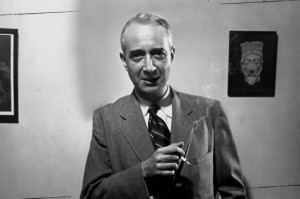Happy 2013… or is it? We often forget that “time” and “space”, besides being two central dimensions of history and social studies education, are  themselves social constructs rooted in contextual understanding. One simple way to expose and/or remind students of the import of context in their construction of knowledge is through purposeful questioning that challenges accepted, internalized constructs. For starters, “What year is it?”, “In which season does New Year’s take place?”, “Which way is “up/down” on a globe?”, and “what is normal.”
themselves social constructs rooted in contextual understanding. One simple way to expose and/or remind students of the import of context in their construction of knowledge is through purposeful questioning that challenges accepted, internalized constructs. For starters, “What year is it?”, “In which season does New Year’s take place?”, “Which way is “up/down” on a globe?”, and “what is normal.”
Beyond spatial and temporal constructs, recognizing and understanding context, and in turn “perspective” and “relativisim”, are valuable (ahem ‘marketable’), critical skills for our globalized reality. Social studies and history education is well versed to teach students about contexts.
To paraphrase mid-20th century intellectual Lionel Trilling, the creation of objective systems (legal, educational, moral, political, cultural, intellectual etc.) is one of noblest ventures of humanity. There existence allows societies to advance, invent, agree, and thrive. “That disrespect for mind Trilling saw epitomized in the aggressive relativism that ridiculed the very idea of “objectivity”, and with it, Trilling insisted, the idea of reality itself. Today, Trilling’s defense of objectivity, as an idea and an ideal, has a prophetic ring, an appeal to redemption, so to speak. ‘In the face of the certainty,’ he told his audience, ‘that the effort of objectivity will fall short of what it aims at, those who undertake to make the effort do so out of something like a sense of intellectual honor and out of the faith that in the practical life, which includes the moral life, some good must follow from even the relative success of the endeavor.’ Yet, it must be remembered that humanity’s objective systems are just that… human made, and therefore subject to change and open to interpretation. Thus the need to celebrate the understanding of context across time and space.
Stanford University’s “Beyond the Bubble” identifies Context and Contextualization as important historical thinking skills. I wish they were more explicit when identifying the usefulness of the skill beyond investigation of the past. “Contextualization asks students to locate a document in time and place, and to understand how these factors shape its content.” Take a look:
I believe “Beyond the Bubble” whose project directors include the esteemed Sam Wineburg, imply that context is a college/career/civic life skill. Along the same line of thought, in a recent article, the AHA’s Tuning project,concurs: “History students need to be able to find and sift information, read with a critical eye, assess evidence from the past, write with precision, and be able to tell stories that analyze and narrate the past effectively. We can also agree about a variety of ways students can demonstrate such skills… Take number 8 from the AHA’s discipline core: “Explore multiple historical and theoretical viewpoints that provide perspective on the past.”
Global education/competencies provide a valuable context for understanding emancipation and slavery in world history. A simple step is to see where US emancipation fits in relation to other nations. Below is a small sample of events that really did turn the world upside down:
Abolition of Slavery
1794 – Haiti
1824 – Spain (after an apprenticeship)
1825 – Chili
1829 – Mexico
1833 – The entire British Empire (after an apprenticeship)
1834 -South Africa
1846 – Danish West Indies ( now Virgin Islands)
1854 – Venezuela & Peru
1860 – Russia (frees the serfs)
1863 – Netherlands
1865 – United States
1875 – Portugal (in their colonies)
1886 – Cuba
1888 – Brazil
Such a simple act of placing an event in a temporal context is a huge step to an empowered understanding of the past. It places ideas like freedom and democracy in context, and encourages valid critiques of claims of paragons to those virtues.
But more significantly allows critical, creative, and reflective insight and engagement with the present and the self. Being skilled in contextual understanding enable students to evaluate contemporary social constructs (race, gender, class, nationalism, identity etc). In turn, the existing attempts at objectivity Trilling mentioned are challenged and not reified. To me, this certainly prepares students for the future.



Good as always. SHEG has added some world history lessons and activities, finally. FYI Civil War in the news: 2 shows on Civil War reviewed in the NYT:
‘The Civil War and American Art,’ Smithsonian American Art:
http://www.nytimes.com/2013/01/11/arts/design/the-civil-war-and-american-art-smithsonian-american-art.html?ref=arts&_r=0
‘The Civil War in America’ at Library of Congress:
http://www.nytimes.com/2013/01/11/arts/design/the-civil-war-in-america-at-library-of-congress.html?ref=arts
Thanks Jeremy! Great resources as well!